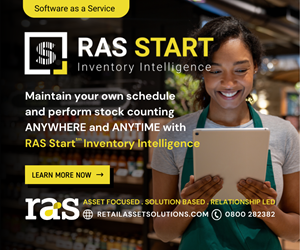Industry focus
We never appreciate what we have until it's gone
The phrase ‘we never fully appreciate what we have until it’s gone’ strongly resonates in the world of profit protection and retail stock file accuracy (SFA).
According to Steve Hewitt, founder of retail consultancy Profitunity, SFA is the benchmark that drives the all-important sales, inventory availability, customer satisfaction, operational efficiency in-store and reduced wastage, as well as capturing shrinkage numbers.
According to the Harvard Business Review, it costs between 5 and 25 times more to obtain new customers than retain existing customers while a study by the ECR Group suggests retailers can expect a 4 – 8 per cent increase in sales by having an accurate inventory.
Utilising data from multiple European retailers, the ECR Group study through Cardiff and Emlyon Business Schools discovered up to 63 per cent inaccuracy levels in grocery and 54 per cent in apparel.
With markdowns running at between 2 and 6 per cent of sales, wastage in grocery directly contributes to the staggering 40 per cent of the world's food going to waste, the environmental impact of which is enormous.
Retailers implicitly contribute by suggesting that poor availability is a greater risk than wastage. In reality, an accurate inventory, alongside best-in-class forecasting and an optimised supply chain could eradicate the problem.
The ECR study also highlighted how the rapid degradation of SFA impacted sales and how discrepancies impacted inventory reality.
From poor checking of in-bound deliveries to mis-scanning and theft – there is an estimated £10bn worth of stolen items every year with over 1000 incidents of theft each day – the issue of managing SFA comes down to product process and protocols – and this means regular counting.
It could be reactive gap analysis, planned cyclical counting, annual stocktakes or RFID, all of which provide a ‘line in the sand’ snap-shot picture in time allowing a retailer to reset their stock files. Each approach come with advantages and limitations ranging from cost and time to operational efficiency.
Often perceived by retailers as a necessary inconvenience, regular and proactive stocktakes, whether third party or carried out internally, provide the essential data to boost sales and improve the customer experience.
External stocktakes using third parties, although expensive, can be seen as both flexible, more accurate and requiring no training. However, the reality of other retailer commitments pushing counts back, accuracy potentially impacted by ‘count blindness’ and different cultures means not all retailers are receptive to a one-size-fits-all approach.
Conversely, using a retailer’s own team has traditionally been resisted on grounds of trust and operational efficiency – if they are counting they are not serving customers.
However, if you trust your colleagues with cash management, high-end product handling and customer engagement, why would you not do the same for stock counting?
Plug and play scanners loaded with counting software that require no training – it’s as simple as scanning a barcode - can now be delivered to stores and collected at the end of the count meaning that disruption is kept to a minimum, along with costs.
Colleagues with the right tools also have better store knowledge as well as an understanding of the back-of-house complexities.
This captured intelligence can also inform performance management, detailed shrink data and identify profit protection opportunities meaning that they are no longer out for the count but open for business when it comes to enhancing their stock file accuracy.
To read the full white paper ‘ABC, it’s as easy as 123’, click here.






